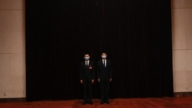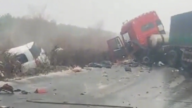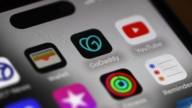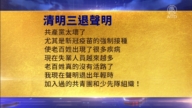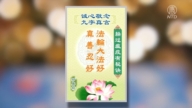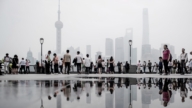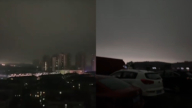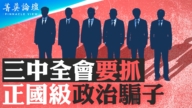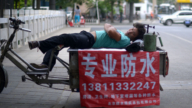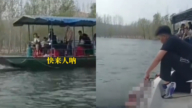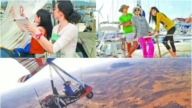【新唐人2013年05月03日讯】一场“农夫山泉质量门”风波,彻底打碎了大陆民众对于中国食品安全最后一线希望。瓶装饮用水都不如自来水了,老百姓还能喝什么?各种五花八门的瓶装水哪种才是最干净的?为何各种瓶装水企业执行的标准不一?诸如此类的疑团成了目前人们最迫切想要了解的问题。而这一切的背后,呈现出中国瓶装水行业质量隐忧和标准乱象。
在公众的认知当中,瓶装水理应比自来水更加安全、卫生。然而,通过对比两者国家标准的水质指标得出:瓶装水质指标仅有20项,自来水质指标则达到了106项。而诸如汞、银、四氯化碳、甲醛在内的毒理性指标,以及pH值、硬度等较为常见的水质指标,都没有出现在瓶装水国标中。
甚至有专家研究发现,在对微生物的要求方面,瓶装水国标还要低于自来水国标。例如:瓶装水国标中,大肠菌群指标为每100毫升小于或等于3个MPN 值(MPN/100ml≦3),而自来水国标中则要求不得检出大肠菌。
北京水污染环保自愿者、民间水专家张峻峰:“ 好像瓶装水的标准确实是比较老,或者一直没有一个适合的标准出台。自来水的指标应该在去年下半年的时候,国家颁布了一个更加严格的、参照欧美发达国家这样一种指标体系。”
那是不是自来水就肯定比瓶装饮用水要干净呢﹖一位大陆自来水安全检测专家向《新唐人》道出了不为人知的实情。
广西钦州市自来水公司安全部副主任戚钦宏:“在欧洲和美国就是那种直饮水,但是人家的标准是100多样标准,我们中国做不到。没有这个条件做得到。 像我们这个地方大概就40多项吧,40多项都不一定完全做完整。可能在北京、深圳这些地方做的标准多一点吧!”
同时,专家还指出,一些外在因素也会导致自来水水质安全出现问题。例如地下水管壁的銹化和水源污染。
此外,有些地方的自来水源因为过脏,不得不用大量药物去净化过滤,当地自来水厂可以和化工厂相媲美。而这种含有大量化学药物的自来水,如果直接饮用,也会对身体造成伤害。
戚钦宏:“ 我们中国为什么每年有8500多个癌症病人,每6分钟有一个,一个肺癌、一个肝癌,其中肝癌就和喝水有关。”
戚钦宏认为,造成这些现象的根源,其实是中国的发展模式。
戚钦宏:“ 我们中国基本上发展到那里就污染到哪里,就是先发展、污染,然后再治理,但是(治理)污染的成本太大了!这和中国政府发展片面追求GDP有关,这是根源。”
随着饮用水市场竞争日趋激烈,各种 “矿泉水”、“山泉水”、“纯净水”等相继诞生,企业执行的标准“国标”、“地标”、“企标”搞得消费者一头雾水。
张峻峰:“一个是真正的天然矿泉水,或者是天然的地表水。还有一种是人工加工的水,一种加工的水叫纯净水或者蒸馏水, 还有一类被称之为矿物质水,不是矿泉水也不是纯净水,实际上就是自来水通过过滤加工之后,再加上一定的矿物质,组合而成的。”
但无论是哪种类型饮用水,执行何种标准,质量都越来越令人堪忧。
据市场调查数据显示,瓶装水在致癌物质溴酸盐含量上,矿泉水的合格率仅50%,矿物质水合格率为66.7%,山泉水为71.4%。
除了“农夫山泉”之外,“雀巢矿泉水”、“娃哈哈纯净水”、“依云矿泉水”等知名水品牌,都曾爆出质量丑闻。
究竟是什么原因造成了中国饮用水市场如此乱象丛生?
戚钦宏:“主要原因就是工厂,竞争激烈。 另外一个原因就是,卫生监督部门检查的还不够严格,我们中国很多食品安全,很多的责任就是那些职能部门检查的不严格。”
专家最后建议大陆民众,自来水尽量过滤,尽量饮用白开水或者水源地无污染的矿泉水。
采访/朱智善 编辑/张天宇 后制/肖颜
China’s Bottled Water Worse than Tap Water
‘The Quality of Nongfu Spring’’ incident has completely
shattered Chinese people’s hope for safe food.
People ask themselves, if even the bottled water
is worse than the tap water, what can we drink?
Which kind of bottled water is the cleanest?
Why bottled water’ companies have different standards?
Such questions bother people’s minds,
and they eagerly want to know the answers now.
However, behind all of these transpire people’s worries,
and the standards’ chaos of China’s bottled water industry.
Based on public awareness, bottled water should be
more secure and clean than tap water.
However, a comparison of national standards
for tap’ and bottled water show something else.
There are 106 quality indicators for tap water,
but only 20 quality indicators for bottled water.
Silver, carbon tetrachloride, formaldehyde, including
toxicological levels, as well as pH, hardness,
and other common water quality indicators,
are not required to measure in the bottle water GB (Guóbiāo.)
Experts even found, the allowable level of microorganisms
in tap water is lower of that in GB bottled water.
For example, in bottled water GB, coliform index should be
less than 3 MPN per 100ml (MPN/100ml, ≦ 3), but the tap water does not allow presence of coliform.
Beijing water pollution and environmental protection
volunteer, private water expert, Zhang Junfeng spoke on the issue.
Zhang Junfeng: ‘The bottled water standards are indeed old,
or there is not a suitable standard yet.
Last year, the state published stricter tap water standards,
with reference to the developed countries.’
So, is the tap water definitely cleaner than the bottle water?
Mainland tap water testing expert shared little-known facts.
Qi Qinhong is a Deputy Director of Guangxi Qinzhou
Tap Water Company spoke with NTD.
Qi Qinhong: ‘Europe and the US have over 100 standards
for any kind of drinking water; we in China cannot do this.
There are no conditions to do this. Like in our place,
there are around 40 standards, and even these cannot be met.
Maybe in places such as Beijing and Shenzhen,
they have more standards’ requirements.’
Meanwhile, experts pointed out that some external factors
can lead to water quality and safety problems, such as the groundwater pipes walls’ rust and water pollution.
In addition, in some places, the source of tap water is so dirty,
the water has to be filtered and purified by many chemicals, so the local tap water factory is more like a chemical factory.
This kind of tap water contains a lot of chemicals,
and if drank directly can be harmful to the human body.
Qi Qinhong: ‘China has over 8500 new cancer patients each
year; every 6 min. there is one lung’ or liver cancer patient; the liver cancer is related to the water people drink.’
Qi Qinhong believes, the root cause of these phenomena,
is in fact China’s developmental model.
Qi Qinhong:’In China wherever we have development,
we have pollution.
Or first we develop and pollute, and then think about control.
But the costs to control the pollution are huge!
This relates to the Chinese government’s one-sided
pursuit of GDP, which is the root cause of the problem.’
With the increasing competition of the drinking water market,
all kinds of ‘mineral,’ ‘spring,’ and ‘pure’ water’ are born.
The companies’ implementation of standards like ‘GB,’
‘local,’‘enterprise,’ make the consumers fog headed.
Zhang Junfeng: ‘One kind is the real natural mineral water,
or the natural surface water.
Another is manually processed water,
called pure water or distilled water.
Another is the mineral water,
which is neither mineral, nor spring, nor pure water;
it is actually a tap water after processed by filtration,
with certain minerals added to it.’
But regardless of the kind of drinking water or standards,
the quality is always doubtful.
According to market survey data, bottled water carcinogen
bromate’s pass rate is 50% in mineral spring water, 66.7% in mineral water, and 71.4% in mountain spring water.
Except for ‘Nongfu Spring,’ ‘Nestle mineral water,’
‘Wahaha purified water,’ ‘Evian mineral spring water,’
all well-known water brands,
have had quality scandals.
What had exactly caused such a chaos
on China’s drinking water market?
Qi Qinhong: ‘The main reason is the severe competition
between the factories.
Another is the health supervision departments’
investigation is not stringent enough.
In China, we have many food safety issues, so a lot of the
responsibilities should be taken away from those departments, because their investigation is not strict.’
Experts recommend to people in Mainland China,
to filter their tap water,
and to try drink boiled or mineral water,
which is water source pollution-free.


